Data structures are organized ways of storing data in a computer so it can be used efficiently. There are two categories of data structures: linear and non-linear. Linear structures arrange elements sequentially, while non-linear structures arrange them hierarchically. An algorithm is a set of unambiguous steps to solve a problem or achieve a goal. It must be feasible, terminate, and produce the correct output given specified inputs. Pseudocode uses a mix of natural language and programming concepts to describe algorithms at a high level without specific syntax.

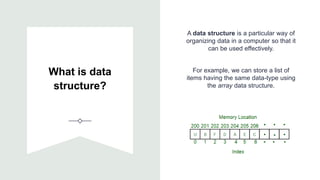
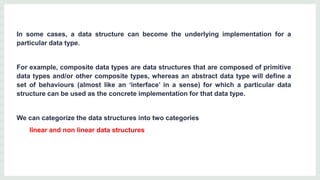
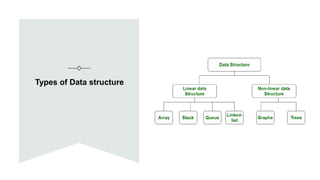
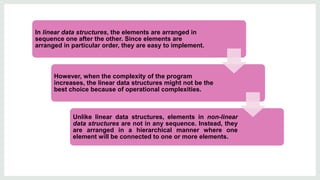
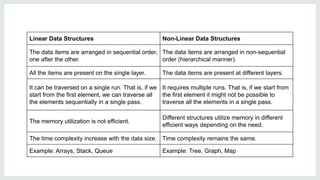

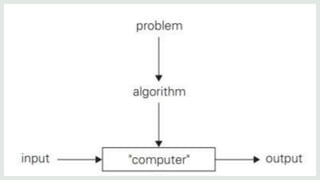

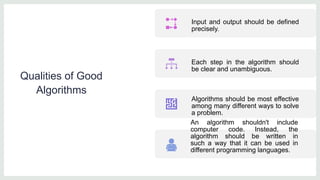
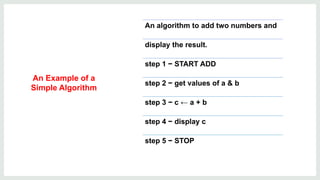
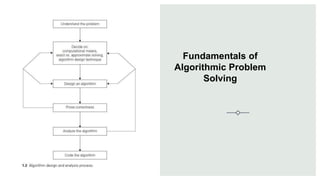
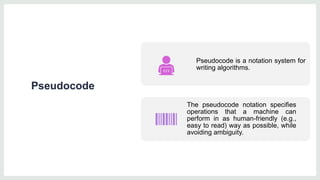
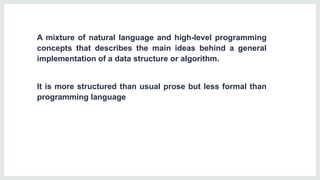

![5. Use “=” or “← ” operator for assignment statements.
Ex:
i = j or I ← j
n = 2 to length[A] or
n ← 2 to length[A] .
6. Array elements can be represented by specifying the
array name followed by the index in square brackets.
For example,
A[i] indicates the ith element of the array A.
7. For looping or iteration use for or while statements.
Always end a for loop with end for and a while with end-
while.
8. The conditional expression of for or while can be written
as shown in rule (4).
PSEUDOCODE
CONVENTIONS](https://image.slidesharecdn.com/datastructureandalgorithmsintroduction-220405043713/85/Data-Structure-and-Algorithms-Introduction-pptx-16-320.jpg)
![Sample pseudo-code for insertion sort using
the above conventions:
• INSERTION-SORT(A)
1. for j ← 2 to length[A]
2. key ← A[j]
3. I ← j – 1
4. while i > 0 and A[i] < key // If
required, use this convention for a
comment
5. A[i+1] ← A[i] // Swap two elements of
array.
6. i ← i –1
7. end-while
8. A[i+1] ← key
9. end-for](https://image.slidesharecdn.com/datastructureandalgorithmsintroduction-220405043713/85/Data-Structure-and-Algorithms-Introduction-pptx-17-320.jpg)